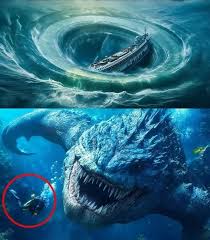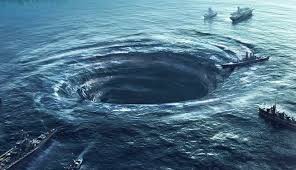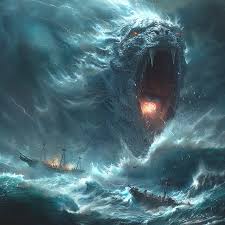The chilling image of a Megalodon shark attacking ships in the Bermuda Triangle strikes fear into everyone’s imagination
The chilling image of a Megalodon shark attacking ships in the Bermuda Triangle, while a compelling piece of fiction, is based on two popular but scientifically debunked myths. The scenario, which combines the terror of a colossal prehistoric predator with the mystery of a fabled region, exists solely in the realm of movies and folklore.

First and foremost, the Megalodon shark has been extinct for approximately 3.6 million years. Scientific consensus, based on an extensive fossil record of its teeth and vertebrae, confirms that this massive predator disappeared from the oceans long before the first modern humans appeared. The ocean environment has changed dramatically since the Megalodon’s time, and there is no credible evidence from deep-sea exploration, satellite imagery, or sonar scans to suggest that the species has somehow survived. The idea of a living Megalodon is a thrilling concept, but it is not a scientific reality.

Second, the Bermuda Triangle is not a region with an unusual number of mysterious disappearances. The U.S. Navy and the U.S. Coast Guard, among other official bodies, have repeatedly stated that the number of incidents in this area is not statistically higher than in any other heavily trafficked part of the ocean. The disappearances that have occurred in the region can be attributed to natural, explainable causes. The area is prone to severe and unpredictable weather, including hurricanes and sudden squalls. It is also an area with challenging geography, featuring a deep ocean trench and strong currents. When a vessel is lost in such conditions, the vastness of the ocean makes finding any wreckage incredibly difficult, thus fueling the “without a trace” aspect of the myth. The image of a Megalodon attacking ships is a creative fusion of two separate, and long-debunked, popular narratives.
